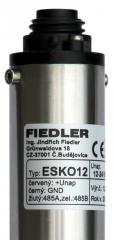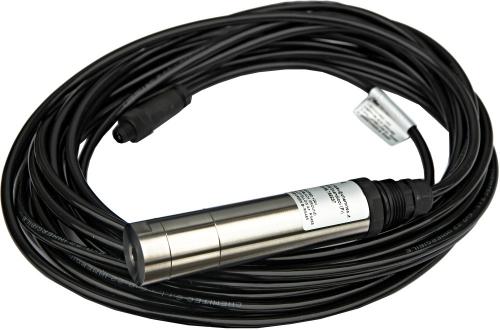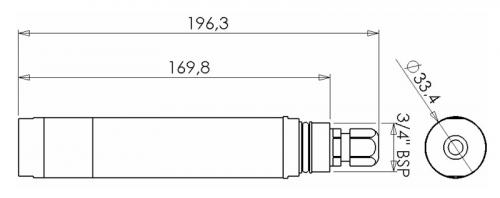ESKO12 - optical probe of dissolved oxygen in water
- Luminescent optical method for measuring the concentration of dissolved oxygen
- Accurate measurement without the need for regular calibration
- When measuring, the sensor does not consume oxygen and therefore does not require the flow of water around the sensor
- The ESKO12 rod probe and the suspended probe use the same S423/C/OPT sensor
- Quick installation of the ESKO12 rod probe in the correct measuring position using the adjustable stainless steel holder DE2
- Suspended version of the probe with S423/C/OPT sensor and 10 m long cable
- RS485 communication interface under MODBUS RTU protocol compatible with FIEDLER units
- Internal sensor for measuring water temperature
- Supply voltage in a wide range from 10 to 24 VDC
Operating principle
The principle of measurement is based on the effect of dynamic luminescence quenching by molecular oxygen.
The S423/C/OPT sensor works on the principle of mea-suring the intensity of radiation on the luminescent layer of the measuring head caused by a short light pulse of high energy generated by the sensor electronics. Oxygen atoms absorb the energy of the pulse, which would otherwise be emitted in the form of photons by the luminophore atoms, and therefore the concentration of dissolved oxygen in the measured solution is inversely proportional to the measured intensity of the luminescent radiation.
The sensor also regularly measures the intensity of the low-energy reflected light luminophore (which does not cause luminescence) and uses this measured value during the sensor's own autocalibration.
Unlike Clark-type electrochemical probes, optical probes do not require regular calibrations, do not need to change electrolyte or clean the chemically worn anode.
Application
The S423/C/OPT probe is used for the optical measure of oxygen in pure and process waters.
- Wastewater treatment plants
- Measure of oxygen in primary, industrial, recirculating water
- Fishing
Features and benefits
- The probe are placed in the measured medium at an inclination (30 to 45 degrees) to prevent the accumulation of gases on the surface of the luminophore measuring head.
- The luminescent method of measurement does not consume oxygen during the measurement and therefore the probe does not require the flow of the measured medium around the measuring head.
- Unlike the commonly used Clark electrochemical probes, the optical probe does not need to change the electrolyte and there is no gradual decay of the anode due to ongoing chemical reactions.
- The probe does not require calibration by the user -automatic autocalibration takes place during each measurement.
- After 2-3 years of operation, the luminophores in the exchangeable measuring head may be depleted. By fitting a new measuring head, the correct function of the sensor is restored. When replacing the measuring head, it is necessary to calibrate the sensor.
Rod probe ESKO12
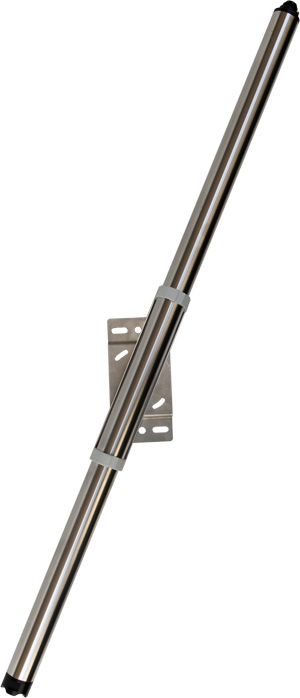
The most common mechanical design of the dissolved oxygen probe for wastewater treatment plants. The rod probe can be easily installed using the DE2 holder on the railing of the activation tank or on the edge of the tank.
The ESKO12 probe includes a stainless steel tube holder and a S423 / C / OPT measuring sensor with a shortened cable so that the entire cable fits into the tube holder. The ESKO12 probe also includes an M12 / Amphenol-7 connector reducer at the upper end of the tube holder.
The ESKO12 probe is supplied with a 3 m long connecting cable, which is terminated on one side by a 7-pin Amphenol-7 connector with high IP67 protection and the other side is free. The length of the connecting cable can be extended up to 500 m.
The stainless steel tube of the ESKO12 sensor with a diameter of 40 mm can be supplied in lengths from 500 mm to 4000 mm on request.
Detail of the connector connection of the ESKO12 rod probe with the Amphenol-7 connector:
Connection of pins of the ESKO12 rod probe connector:

1 +Unap (red)
2 NC
3 NC
4 NC
5 RS485-B (green)
6 RS485-A (yellow)
7 GND (black)
Holder DE2
The ESKO12 rod probe is usually attached to the measuring point using an adjustable stainless steel holder DE2.
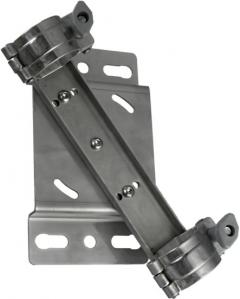
The DE2 holder is two-part and, in addition to adjusting the inclination, also allows the probe in the holder to be moved, for example, according to the current water level or when cleaning the probe from coarse dirt.
Suspended probe S423/C/OPT
The suspended probe is supplied as standard with a 10 m long cable, which has a 5-pin M12 / 5F industrial connector fitted at the end.
When hanging the probe by the cable, it is also necessary to ensure the oblique position of the probe so that air bubbles do not stick to the measuring head of the S423 sensor.
Connection of pins of the ESKO12 rod probe connector:
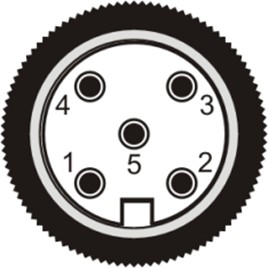
1 + Unap (red)
2 GND (black)
3 RS485-A (yellow)
4 RS485-B (green)
5 shields (black)
Dimensions of suspension probe S423/C/OPT:
Luminophores head CAP423
The manufacturer's recommended replacement time for the probe head is 1 to 3 years, depending on the degree of depletion of the luminophores layer. It must never come into contact with organic solvents such as acetone, chloroform, benzene and toluene. Likewise, chlorine gas can irreversibly damage the head and thus affect the accuracy of the measurement.
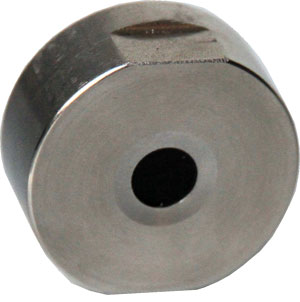
The head with the luminophor is screwed on the body by the probe and therefore the replacement of the head is relatively simple. It is recommended to calibrate the probe after each head replacement.
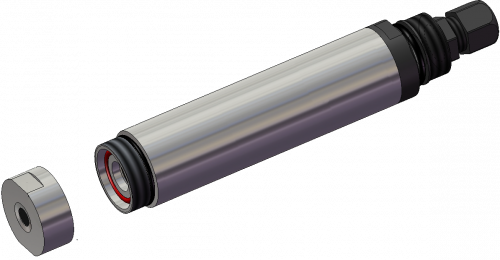
Basic technical parameters
| Parameter | Value |
| Measuring method | optical measurement of excited luminescence |
| Measuring range | 0,00 to 20,00 mg/l |
| Measurement accuracy | +/-0,1mg/l |
| Response speed | reaching 90% of the value in <60 sec |
| Measurement frequency | min 1 measurement / sec |
| Working temperature range | -10 to +60 °C |
| Maximum working pressure | 5 bar |
| Dimensions ESKO12 (diameter x length) | 40 x 1750 mm |
| Sensor material | nerezová ocel, Tecaform |
| Diameter of the phosphor of the measuring head | 10 mm |
| Weight of rod sensor ESKO12 | 2200 g |
| Weight of the ESKO12-Z pendant sensor | 1150 g |
| Sensor cable length ESKO12-Z | 10 m, conenctor M12 |
| Power voltage | 12 to 24 V DC |
| Interface | RS485, protocol Modbus RTU |
| Temperature compensation | internal NTC |
| Cover | IP68 |
Main menu
- Solutions
- Tap water treatment
- Dispatching accessible via the Internet
- Remote water meter reading
- Monitoring of water leak
- Measurement of qualitative water parameters
- Measurement in Water Supply Network
- Pressures and flows regulation
- Controlling of water pumps and water reservoirs
- Controlling technology of waste purification plants
- Flow processing into charts
- Waste water treatment
- Monitoring of running and technology of WWTP
- Control technology of WWTP
- Measurement of waste water flow
- Dissolved oxygen measurement and aeration blowers control
- Measurement of chemical parameters of water
- Local control of pumping stations
- Remote control of pumping stations
- Root zone waste water treatment plants
- Dispatching accessible via the Internet
- Processing of measured flow data
- Water level monitoring
- Flood warning system
- Environmental monitoring
- Water level and flow monitoring in small water-courses
- Temperature measurement in bore holes and water basins
- Monitoring of soil humidity and temperatures
- Measurement of rain-fall quantity and intensity
- Level measurement in boreholes and remote data collecting
- Measurement of water temperature and conductivity in boreholes
- Measurement of well yield – pumping tests
- Water-level regulation in boreholes
- Capacity and intensity of drainage water
- Thermal balance in ecological constructions
- Meteorological stations
- Relative humidity and air temperature, rainfall, global radiating, atmospheric pressure, speed and direction of wind
- Satellite transfer while the GSM signal is unavailable
- Meteorological stations for agriculture and research institutes
- Extension of meteorological stations about special sensors
- Different type of tower constructions
- Data transfers into the Internet
- Special kinds of graphs for visualization
- Irrigation control systems
- Data collecting and processing
- Data hosting on the server
- Software MOST
- Parameterization of stations via the Internet
- Transferring of measured data into a current dispatcher programme
- Visualization and processing of data
- Data exports from the server into the PC
- Overview reports working-out and printing
- An automatic emails sending
- Types of SIM cards
- Operating costs of the telemetric station
- Industrial applications
- Tap water treatment
- Products
- Monitoring and control units for water supply
- Small telemetric stations and data loggers
- Smart Metering - remote meter readings
- Water level meters
- Hydrostatic level meters
- Radar level meters
- Ultrasonic level meters
- Level gauges for wells, boreholes and reservoirs
- Level float switches
- Equipment for pumping tests of boreholes and wells
- Local Warning Systems
- Flow meters for open channels
- Water quality sensors
- Meteorological stations and measuring sensors
- Accessories for control units and data loggers
- Boxes and cabinets for telemetry and control units
- Gel accumulators, batteries and backup sources
- AC power supplies and battery chargers
- Photovoltaic solar panels
- Antennas and extension cables
- Sensor cables, connectors and connecting expanders
- Communication signal converters and communication cables
- Mechanical mounting elements
- Industrial and residential water meters
- Server software and services
- References
- Support & Download
- About us
- Monitoring
- Datahosting
- OPTIMA Control unit
Documentation
Download
Application
no related solutions


